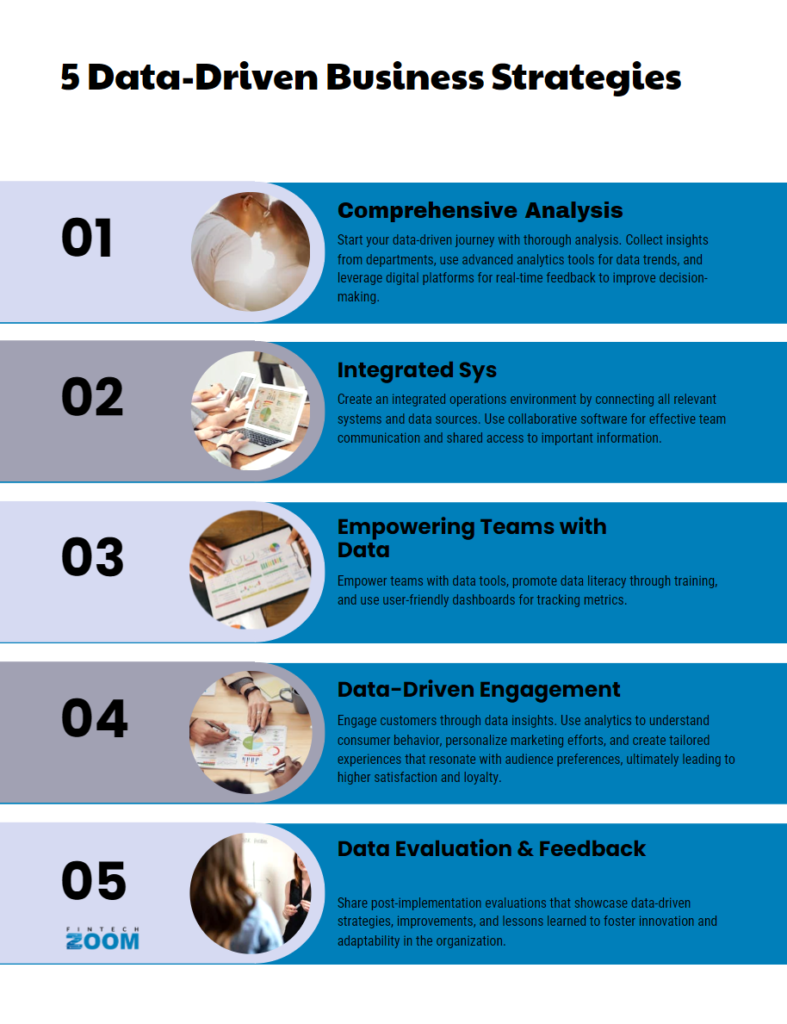By now, you know the critical role data plays in a business owner’s decisions. Without good information, it’s tough to drum up a plan. Imagine trying to target consumers, deciding whether to expand operations, and introducing new products without data.
Data-driven strategies have existed for eons. However, with the introduction of AI, machine learning, and analytics, these approaches are changing how departments within an organization operate. Everything from HR to product development is impacted. Let’s explore how.
Streamlining HR Duties
The admin side of HR can become an intricate web. There’s paperwork like payroll taxes that can’t be ignored. Add unemployment insurance filings, liability insurance, workers’ comp claims, and new hire onboarding. It’s a lot to juggle on top of finding ways to improve retention and mediate conflicts.
Instead of attempting to do it all, some businesses are turning to a PEO, a professional employer organization. But what is a PEO? And how is it part of a data-driven strategy for HR departments?
PEOs are partners who share specific responsibilities with a company. Those responsibilities include HR compliance support, helping with remote teams, and extending lower-cost benefits like health insurance. PEOs help manage employee-related data while providing smaller businesses access to the resources of larger corporations.
These partners don’t manage the day-to-day or provide legal and tax advice. However, PEOs can create space for HR teams to focus on strategies for recruiting top talent and expanding professional development. When HR leaders realize a disproportionate amount of time is spent on administrative duties, they have a decision to make. They can keep the status quo, hire more staff, or enlist the help of a PEO.

Understanding Consumers With Greater Accuracy
For 74% of consumers, their experience alone is somewhat likely to influence their intent to buy. If they have a poor interaction with your brand, they’ll probably end up becoming a churn statistic. Bad customer experiences can also reach your most loyal consumers. One unfortunate interaction is enough for 32% of customers to cut ties with a brand they love.
This means the stakes are high for companies to get it right. Marketing and sales departments can’t do it without fresh, accurate data-driven insights. It’s one thing to survey your customers six months after a new product launch. Yet, tracking how various consumer segments react to the new product in real time is more valuable.
Why? Because surveyed consumers aren’t going to remember every little detail about their perceptions of a new product six months later. Furthermore, their behaviors toward the item will probably change by then. The data you collect will be distorted and diluted at best; completely off base at worst.
How personalized and effective will your marketing campaigns be if you use this information? Not as much when compared to messages based on granular, real-time tracking. You’ll also be making more accurate predictions about future behaviors and reactions. Predictive analytics and AI are more efficient at consolidating data from multiple sources, revealing insights you’d otherwise miss.
Optimizing the Supply Chain
Supply chain disruptions are more than inconveniences. Delays cost businesses money, especially small and medium-sized companies. Almost 60% of small and medium businesses lose 15% in revenue because of supply chain disruptions. While you might not be able to prevent every delay, you can use data to mitigate those risks.
Data-driven strategies ensure your demand forecasts are more on target, helping your warehouse better manage its inventory. Part of this improved management may include predicting when you’ll need to diversify your suppliers. Scrambling to make up for less product than actual demand isn’t an envied position to be in. Identifying risks ahead of time ensures you can be proactive in maintaining the service levels customers expect.
Your logistics department can also leverage data analytics to pinpoint shipping inefficiencies. Most customer service employees know consumers get upset when packages don’t arrive on time or go missing. Besides the costs of damaged reputations and fewer orders, there are expenses associated with inefficient distribution practices.
Maybe the delivery routes your fleet employees take are too long and expansive. Mistakes increase because drivers are fatigued and the neighborhoods are too far apart. Drivers are more likely to face traffic delays and one-off stops that don’t fit into the rest of the route. Using big data to uncover inefficiencies like these can help logistics make tweaks to reduce expenses.
Improving Pricing Decisions
Price something too high and you won’t make sales. On the other hand, if you price your offerings too low, your profit and loss statements won’t look promising. For smaller businesses, it’s hard to compete with the rock-bottom price strategies of a few larger organizations. Nonetheless, knowing how to price your products relative to the competition can sometimes feel like a guessing game.
To maximize profits, you need data-driven solutions. It’s much easier for an analytics program to combine market, customer, and competitor information to reach an optimal conclusion. You’ll know when it makes sense to price higher or in line with the competition.
Data analytics will also reveal when it’s OK to implement sales and promo initiatives on specific items. You won’t be playing the guessing game, hoping your decisions don’t erode profits too much. Your pricing strategies will be more effective and support your company’s growth.
The Data-Driven Revolution
Businesses are collecting a wide variety of data, sometimes more than leaders have time to analyze and grasp. Putting it all together into actionable insights may seem overwhelming, but these golden nuggets have the potential to transform operations. And it’s not only one department that can be positively impacted by these changes.
Across your entire company, data-driven strategies can streamline employee responsibilities and give customers better experiences. Coordinating each department’s approach to using data isn’t insurmountable. But it does take a willingness to embrace collaboration, both within and without.


